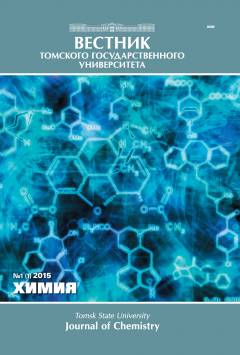Processing of sulfuric acid production waste
Waste processing is relevant, given the limited availability of raw materials and resources. The production of sulfuric acid requires special attention. Operating enterprises often store waste at their production sites, or it is disposed of in violation of a number of requirements for handling industrial waste. Almost all sulfuric acid systems at Russian enterprises have significant capital depreciation, which is associated with large annual costs for capital and current repairs. In addition, existing technologies are morally obsolete and do not fully meet the changed technical, economic, and environmental requirements. At the present stage of industrial development, the most realistic strategy is the phased reconstruction and modernization of individual units and departments of existing sulfuric acid systems, with simultaneous intensification and improvement of production efficiency, with relatively little investment. As the main directions of reconstruction of sulfuric acid production, approaches of using more efficient raw materials with simplification of the technological process and lowering of operating costs are suggested, and intensification of sulfuric acid systems by increasing the concentration of sulfur dioxide in systems to 11.5-12.0% (vol.) using more efficient catalysts, optimization of the use of heat of sulfur combustion, and conversion of sulfur dioxide with an increase in the production of energy vapor, followed by its use for producing electricity, the use of production waste in recycling, or the production of new materials based on them. In the production of sulfuric acid, waste products are formed by contact, as a result of cleaning and repair of equipment, acid spills, and used materials such as spent vanadium catalyst, sulfur cake, and spent sulfuric acid. The choice of the method of processing depends mainly on the composition of the waste generated. Often, preliminary preparation for regeneration or preliminary purification is required, accompanied by extraction, oxidation, salting out, coagulation, adsorption, and thermal decomposition. In applying technologies for processing sulfuric acid production waste, it should be taken into account that some of them are toxic and/or explosive, which necessitates special protective measures when designing workshops and processing sites. Thus, vanadium pentoxide included in the exhausted vanadium catalyst in the composition of 7-15% (vol.) is a toxic substance, a Category 2 hazard. The research conducted enabled understanding the main mechanism for processing vanadium catalyst, thus obtaining a regenerated product of the conversion of sulfur dioxide. The paper considers the main ways of regeneration of valuable components, processing them into new products of sulfuric acid production. The optimum mode is selected and described. The design of the sulfuric acid plant is being developed with the separation of catalyst regeneration.
Keywords
серный кек, ванадиевый катализатор, отходы, серная кислота, регенерация, отработанная кислота, сера, sulfur cake, vanadium catalyst, waste, sulfuric acid, regeneration, spent acid, sulfurAuthors
| Name | Organization | |
| Surovaya Victoria E. | Kuzbass State Technical University named after T.F. Gorbachev | sur.vik@mail.ru |
| Kravchenko Kristina N. | Kuzbass State Technical University named after T.F. Gorbachev | daimon1605@mail.ru |
References

Processing of sulfuric acid production waste | Vestnik Tomskogo gosudarstvennogo universiteta. Chimia – Tomsk State University Journal of Chemistry. 2017. № 9. DOI: 10.17223/24135542/9/3